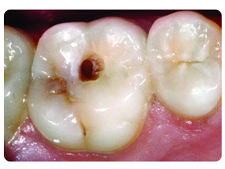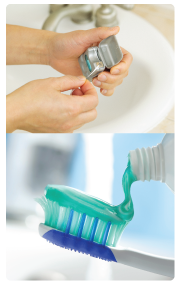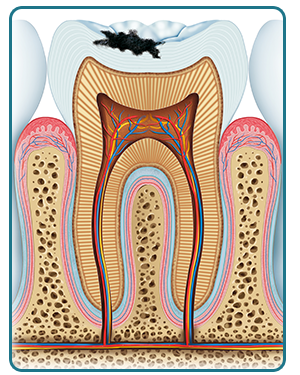Fillings & Restorations
Untreated cavities cause further damage
When a tooth has decayed and developed a cavity, it’s important to remove the decay and restore the tooth. Treatment will stop the cavity from growing larger and weakening the tooth, and it will also prevent bacteria from infecting the inner layers of the tooth.
What is a cavity?
A cavity is a hole in the tooth that forms when acids in the mouth destroy tooth structure. These acids are produced by the bacteria in plaque, which is the sticky, colorless film that forms constantly on your teeth. Unless steps are taken to prevent this decay process, the acids slowly dissolve the tooth enamel, causing a cavity.
 Finding cavities
Finding cavities
We locate tooth decay by performing a thorough exam, which can include visual inspection and the use of a dental explorer, x-rays, and sometimes specialized equipment as well.
In some cases, we can see cavities easily on the biting surfaces of your teeth. To check for cavities that are less easily seen on the tops and side surfaces of your teeth, we may use a dental explorer, which sticks slightly when it touches decayed areas. We also use x-rays to find more advanced decay inside a tooth or decay between teeth. On x-rays, cavities show up as dark spots.
During your exam, you may hear us identify the location of a cavity by using numbers and letters. They help us identify the specific surface of a particular tooth. For example, your lower left wisdom tooth is tooth number 17, and the top surface is labeled “O,” which stands for “occlusal.” This term refers to the biting surface of a tooth.
Treating cavities
If we find cavities in your teeth, we’ll remove the decay and place a restoration. There are several types of restorations, including fillings, inlays, onlays, and crowns, and these can be fabricated from a variety of different dental materials. We’ll talk with you about the best restoration for your situation. By treating decay as soon as possible, we can often prevent it from causing further damage and more extensive treatment in the future.



